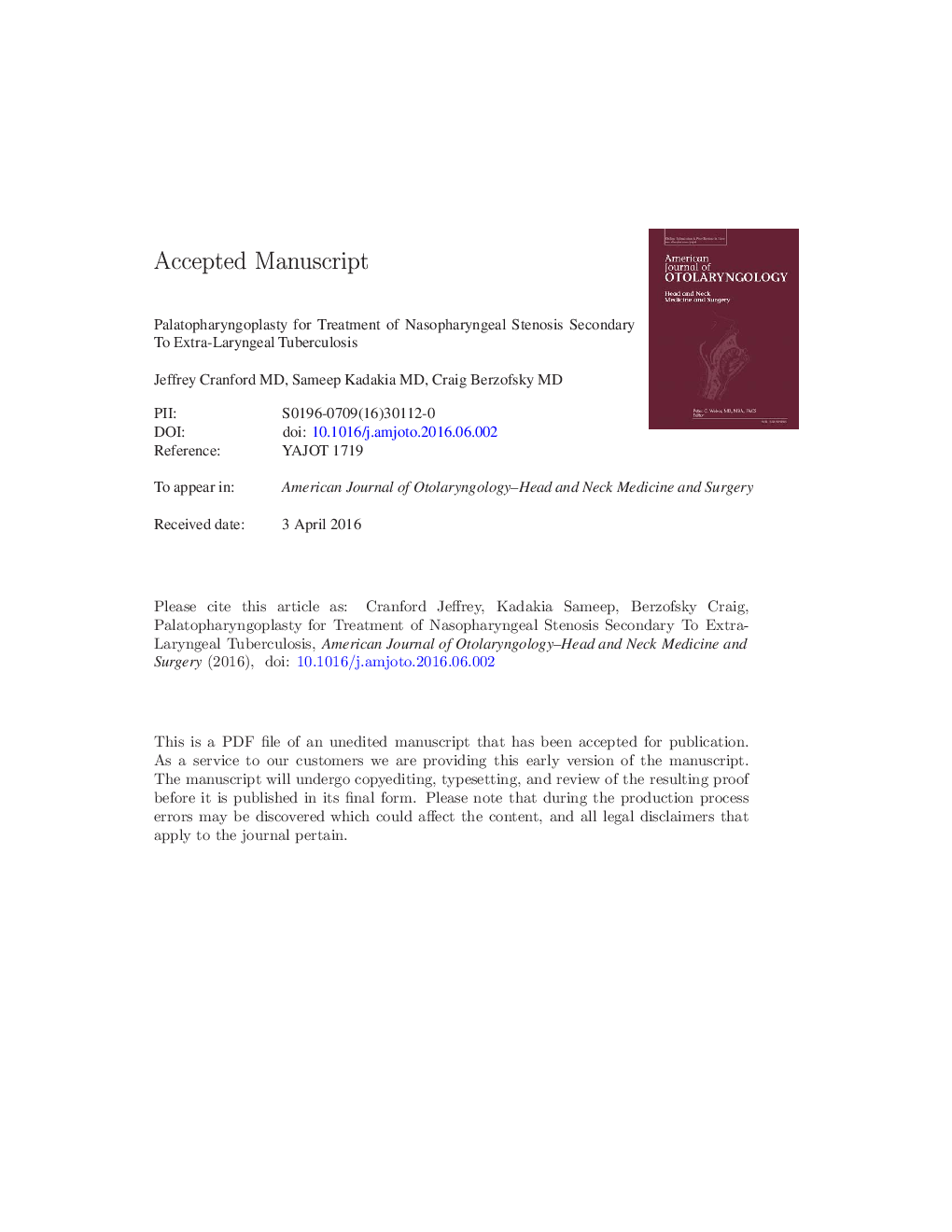| Article ID | Journal | Published Year | Pages | File Type |
|---|---|---|---|---|
| 5713712 | American Journal of Otolaryngology | 2016 | 14 Pages |
Abstract
Nasopharyngeal stenosis is a rare sequela of extra-laryngeal tuberculosis that can adversely impact the quality of life of afflicted patients. Relying solely on the oropharyngeal airway, patients often complain of inspiratory dryness and decreased sensation of airflow as the nasal mucosa and turbinate complex is entirely excluded from the breathing mechanism. Often times, the oropharyngeal inlet can be narrowed as well, limiting the air flow through the oropharyngeal airway. In those circumstances, patients often require tracheostomy for establishment of a reliable airway. We present the unique case of a previously tracheotomized patient with nasopharyngeal stenosis secondary to tuberculosis successfully treated with a modified palatopharyngoplasty to reestablish a patent naso-oropharyngeal airway. During the follow-up period, the patient was decannulated and highly satisfied with his respiratory status. Although rare and more commonly used in the treatment of sleep apnea, palatopharyngoplasty can be a viable option for the treatment of naso-oropharyngeal stenosis and should be kept in the armamentarium of reconstructive craniofacial surgeons.
Related Topics
Health Sciences
Medicine and Dentistry
Otorhinolaryngology and Facial Plastic Surgery
Authors
Jeffrey MD, Sameep MD, Craig MD,
